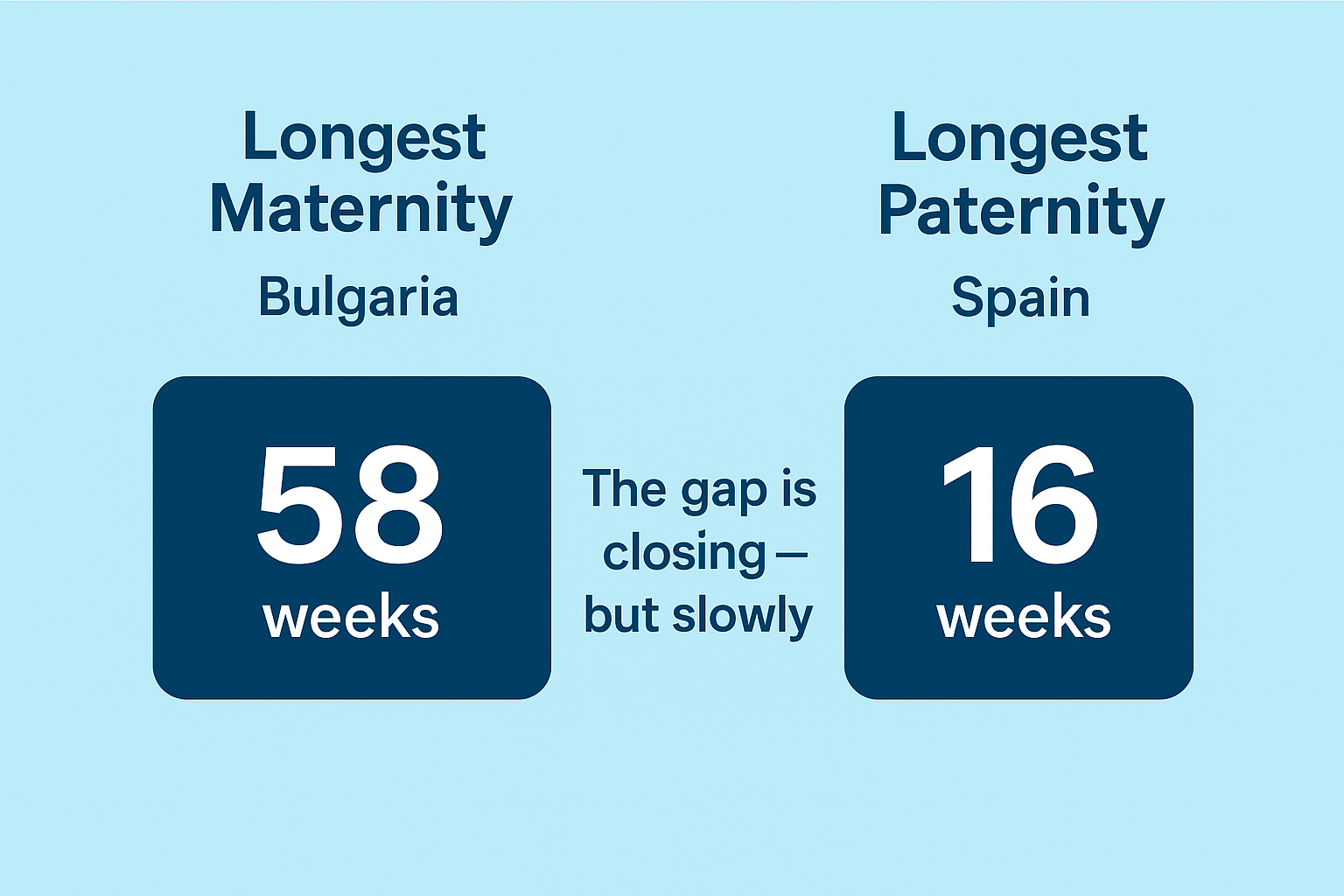If you ask working parents around the world what matters most besides salary and stability, the answer is often time off to raise children. Parental leave is a cornerstone of family health, gender equality, and workforce balance. It enables mothers to recover and bond with newborns, fathers to participate in caregiving, and employers to retain a more satisfied and productive workforce.
But the reality is uneven: while some countries offer a year or more of paid leave, others provide little or none. This article explores global disparities in parental leave, breaking down maternity, paternity, and combined entitlements, and ranking the countries that stand out for generosity.
Parental leave is not a single, uniform benefit.It is an umbrella term that covers a range of entitlements offered to mothers, fathers, or both parents at the time of childbirth or adoption. The type, duration, and level of payment vary widely across countries, which is why international comparisons can be complex.
To compare countries fairly, the OECD uses a metric called full-rate equivalent (FRE). This takes into account:
For example, a country that offers 40 weeks of leave at 50% pay is not necessarily more generous than one that offers 20 weeks at 100% pay. This FRE measure helps normalize differences and highlight real generosity rather than just raw weeks.
A longer leave at low pay may not be usable for many families, especially fathers, who may not afford the loss of income. Conversely, shorter but fully paid leave can be more impactful for both family well-being and gender equality. Thus, both time and income replacement matter in defining how supportive a parental leave system really is.
According to OECD and ILO data, here are the top countries for statutory maternity leave (measured in weeks, with caveats about pay rates).
🔎 Insights:
Fathers are increasingly being included in childcare policies, especially in Europe. Here are the top countries by father-specific, paid leave entitlements:
🔎 Insights:
Cultural shifts: men are more likely to use leave when it’s well-paid and non-transferable.

When comparing parental leave policies worldwide, it’s important to look beyond individual maternity or paternity entitlements. Some countries create comprehensive systems that combine maternity, paternity, and shared parental leave into a broader package of benefits. These systems often reflect a country’s values around family support, gender equality, and work–life balance.
Countries such as Slovak Republic, Hungary, Bulgaria, and Romania are well-known for offering exceptionally long periods of leave often extending up to two or three years through parental or home-care leave schemes. These policies allow parents to stay home during a child’s early development years. However, payment rates are often low or flat-rate, which can limit accessibility for many families unless they already have additional financial support.
In contrast, Nordic countries (Sweden, Norway, Denmark, Iceland, Finland) focus on quality over length. While their leave entitlements may appear shorter on paper, they are typically well-paid (up to 100% of earnings for several months) and include dedicated quotas for fathers. This design encourages both parents to share childcare responsibilities and strengthens gender equality in the workplace.
The most generous systems are not always the longest or the most expensive but those that balance duration, pay, and inclusivity.
Parental leave policies don’t emerge in a vacuum. They reflect a mix of legal frameworks, cultural expectations, economic realities, and social values. While some countries guarantee long, well-paid leave for both parents, others provide only the bare minimum. Several key factors drive how generous (or restrictive) a country’s parental leave system is:
1. Strength of Labor Laws and Institutions: Countries with robust labor protections and active unions often set higher minimum standards for maternity and paternity leave. In Europe, for example, EU directives mandate minimum protections, but individual nations frequently go beyond these requirements.
2. Cultural Norms Around Work and Family: Societies that place a strong emphasis on family life, child well-being, and community care tend to legislate longer leaves. In contrast, cultures prioritizing work intensity and productivity (such as the U.S. or parts of Asia) often provide shorter entitlements or unpaid leave.
3. Gender Equality Goals: Countries actively pursuing gender parity create policies that encourage fathers to take leave, preventing childcare from falling solely on mothers. Nordic countries (e.g., Sweden, Iceland, Norway) pioneered “father quotas,” where parts of parental leave are reserved exclusively for dads.
4. Economic Development & State Resources: Wealthier nations with strong social welfare systems are better positioned to fund paid leave through taxes or social insurance. However, some lower-income countries (like Bulgaria or Slovakia) still provide long leave periods, though often at lower pay rates, reflecting different policy priorities.
5. Political and Religious Influences: In certain countries, religious traditions or national identity shape the recognition of family and childcare. For example, Catholic-influenced nations often emphasize maternal protection, while secular Nordic nations focus on equal parental roles.
6. Collective Bargaining & Employer Practices: In addition to laws, trade unions and employer groups play a role in negotiating generous leave packages. Some multinational companies (Netflix, Spotify, Google) voluntarily offer parental leave beyond legal requirements, influencing competition for talent.
Generous parental leave is more than a benefit it’s a social and economic investment. The impact extends across families, children, workplaces, and society as a whole.
While extended leave can create short-term staffing challenges, research shows that the long-term benefits of retention and workforce satisfaction outweigh the costs. Countries and companies that invest in family-friendly policies often see stronger, more stable labor markets in return.
There’s no single “best” parental leave system. Some countries (Bulgaria, Slovakia, Hungary) emphasize long duration, while others (Sweden, Norway, Spain) emphasize high pay and equal sharing. Generous, well-structured policies benefit not just families, but economies and workplaces. The most effective models align family well-being with workforce participation and equality.